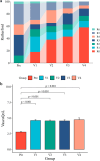S.M.A.R.T. Flex vascular stent system in femoropopliteal arteries: 18-month result of a real-world registry
- PMID: 40696475
- PMCID: PMC12281990
- DOI: 10.1186/s40001-025-02904-w
S.M.A.R.T. Flex vascular stent system in femoropopliteal arteries: 18-month result of a real-world registry
Abstract
Objective: To evaluate the efficacy and safety of the S.M.A.R.T. Flex stents for treating femoropopliteal (FP) occlusive lesions, including complex Trans-Atlantic Inter-Society Consensus (TASC) II C/D and severely calcified lesions.
Methods: This retrospective study utilized the TALENT registry database (a prospective study), enrolling patients who underwent S.M.A.R.T. Flex implantation from January 2021 to July 2022. The primary effectiveness endpoint was the rate of freedom from clinically driven target lesion revascularization (CD-TLR) at 18 months, and the primary safety endpoint was the 18-month rate of freedom from major adverse events (all-cause death, above-the-ankle target limb amputation, or CD-TLR).
Results: A total of 122 patients with 124 limbs were included, with an average follow-up of 617 days. The average lesion length was 24.9 ± 20.4 cm, and 73.8 and 54.1% of the lesions had chronic total occlusions and chronic limb-threatening ischemia, respectively. A total of 127 stents were placed in 107 limbs, with 1 stent placed in 88 limbs (82.2%), 2 stents placed in 18 limbs (16.8%), and 3 stents implanted in 1 limb (0.9%). In this study, 50.5% of the limbs were treated with DCBs, and 83.3% of the TASC C/D lesions were treated primarily with DCBs. The 12- month rate of primary patency was 73.1%. The 18-month rate of freedom from CD-TLR was 93.9% (95% CI: 89.2-98.8%), and the major adverse event-free rate was 75.7% (95% CI: 68.0-84.3%). A total of 92.5% of patients showed primary sustained clinical improvement, and the Vascular Quality of Life Questionnaire scores were significantly improved at 18 months compared with baseline.
Conclusions: The S.M.A.R.T. Flex stents demonstrate promising efficacy and safety as a treatment option for long-segment complex femoropopliteal artery lesions.
Keywords: Chronic limb-threatening ischemia; Clinically driven target lesion revascularization; Femoropopliteal; Peripheral artery disease; S.M.A.R.T. Flex.
© 2025. The Author(s).
Conflict of interest statement
Declarations. Competing interests: The authors declare no competing interests.
Figures
References
-
- Schmidt A, Piorkowski M, Görner H, et al. Drug-coated balloons for complex femoropopliteal lesions. JACC Cardiovasc Interv. 2016;9(7):715–24. - PubMed
MeSH terms
Grants and funding
LinkOut - more resources
Full Text Sources
Medical





